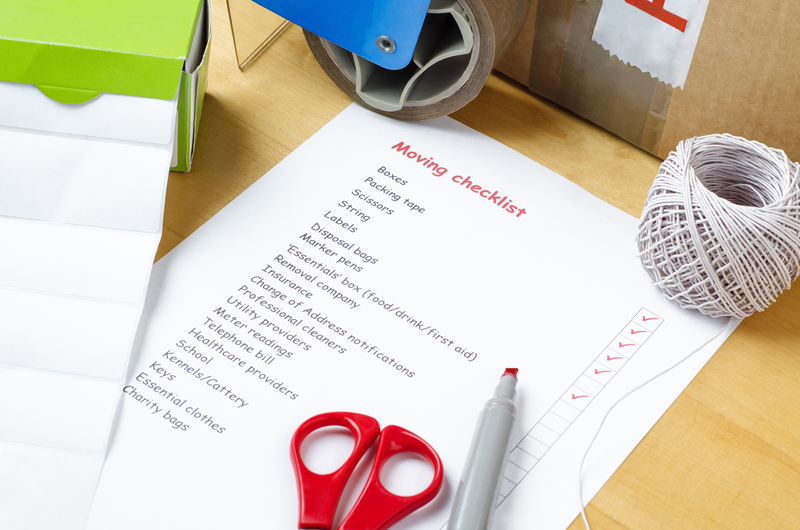Optimize Your Sofa's Lifespan with Expert Storage Advice
Posted on 25/05/2025
Optimize Your Sofa's Lifespan with Expert Storage Advice
Your sofa is more than just furniture--it's where life unfolds. From family movie nights to casual brunches with friends, this centerpiece endures daily wear and tear. If you want your investment to stand the test of time, mastering the art of sofa storage is essential. Whether you're moving, redecorating, or simply changing with the seasons, optimizing your sofa's lifespan with professional storage tips can save you money, effort, and potential heartbreak down the road.
Why Proper Sofa Storage is Crucial
Many homeowners overlook the impact that improper storage can have on their sofa. Exposure to moisture, dust, pests, and fluctuating temperatures can all contribute to the deterioration of your upholstery, cushions, and frame. By incorporating expert sofa storage advice into your planning, you significantly prolong the comfort and beauty of your beloved seating.
Key Benefits of Optimal Sofa Storage Solutions
- Extended Furniture Lifespan: Protecting your sofa from environmental hazards keeps it looking newer for longer.
- Financial Savings: Reducing damage minimizes costly repairs and replacements.
- Convenience: Well-planned storage makes reinstallation or moving projects smoother and stress-free.
- Preserved Value: Sofas that are kept in excellent condition retain a higher resale value.

Understanding Your Sofa's Construction
Before diving into best practices for sofa storage, it's crucial to know what your couch is made of. Sofas typically contain:
- Wood or metal frames (which can be sensitive to moisture or rust)
- Fabric, leather, or synthetic upholstery (with unique cleaning and storage needs)
- Foam, down, or synthetic fill cushions
Being mindful of these components helps you select the best storage environment and method, optimizing your sofa's preservation.
Preparation: The First Step to Long-Lasting Sofas
Deep Cleaning Before Storage
Start with a thorough cleaning. Dust, oils, crumbs, and pet hair can permanently stain or degrade upholstery and cushions left unchecked. Follow this checklist:
- Vacuum every nook and cranny, lifting cushions and cleaning beneath.
- Spot-clean any stains with suitable cleaners for the upholstery type.
- If your sofa is leather, condition it with a specialist leather cream to prevent it from drying out and cracking.
- Allow any cleaning agents to dry completely before proceeding.
Disassembling for Ease and Safety
If your sofa design allows, disassemble larger pieces to protect delicate joints and make transport easier.
- Remove legs, detachable arms, and cushions.
- Bag and clearly label all screws, bolts, and hardware--attach them securely to their corresponding pieces.
- Wrap each segment separately to prevent rubbing or scratching during storage.
Selecting the Perfect Storage Space
Where you store your sofa is just as crucial as how you store it. Climate, space, and security all play pivotal roles in safeguarding your investment.
Characteristics of an Ideal Storage Unit
- Climate-Controlled: Prevents temperature fluctuations, mold, mildew, and fabric deterioration.
- Humidity Regulation: Excess moisture is a leading cause of warping wood and moldy upholstery.
- Pest-Free Environment: Ensures no insects or rodents compromise your furniture's structure.
- Accessibility: Allows you to check on and adjust storage as necessary.
If you must use a garage or basement, invest in a good dehumidifier and sturdy racks to keep your sofa off the floor and away from walls.
Optimal Ways to Wrap and Protect Your Sofa
Choosing the Right Materials
Select high-quality protective coverings and padding. Avoid common mistakes such as tightly sealing furniture in plastic, which traps condensation and promotes mold. Instead, use breathable covers:
- Soft moving blankets or specialty furniture covers
- Bubble wrap (for delicate wood or metal ornaments, not for upholstery)
- Cotton sheets (for an extra layer of dust protection)
Proper Wrapping Techniques
- Cover the entire sofa but allow for air circulation--avoid taping covers directly to fabrics.
- Wrap legs and corners with bubble wrap to prevent dents or scratches.
- Always elevate the sofa using wooden pallets or furniture risers to safeguard against unexpected flooding.
Pro Tip: Don't store anything heavy on top of your sofa--even cushions can suffer permanent shape loss!
Long-Term Storage: Maintenance and Monitoring
Regular Check-Ins Matter
Even with meticulous setup, consistent monitoring is vital for optimizing the lifetime of your sofa in storage. Here's what to keep in mind:
- Visit your storage unit monthly if possible, looking out for moisture, pests, or shifting covers.
- Air out the room or space periodically to maintain freshness.
- If feasible, reposition or "fluff" cushions to help them keep their shape.
Preventing Common Storage Hazards
- Mold and Mildew: Use silica gel packs or moisture absorbers inside your cover to help control humidity.
- Pests: Inspect for droppings or holes and treat immediately with non-toxic deterrents.
- Sunlight Exposure: Excessive light, even through windows, can fade fabrics--cover or position your sofa away from sunlight sources.
Expert Advice for Special Sofa Types
Leather Sofa Storage Insights
Leather requires extra care--failure to treat and store properly results in unsightly cracks or permanent warping. Always apply conditioner and cover with a breathable fabric (not plastic). Avoid placing it directly against hard surfaces to prevent pressure marks.
Antique or Designer Sofas
Sofas with sentimental or high monetary value deserve premium treatment:
- Consult with a professional upholsterer or conservator for storage recommendations tailored to antique pieces.
- Avoid pressure, moisture, and fluctuating temperatures to maintain value and integrity.
Moving and Unpacking: Putting Your Sofa Back in Action
Safe Transport Back Home
- Remove all covers and let your sofa "breathe" before use.
- Check for any musty odors--baking soda can be sprinkled on fabric surfaces then vacuumed away for freshness.
- Reassemble with care, tightening all screws and fittings as you go.
Post-Storage Cleaning and Maintenance
After months in storage, an additional clean may be necessary. Follow these steps:
- Vacuum the entire sofa, including under seat cushions.
- Assess for any pests--better to catch issues early.
- Treat and disinfect surfaces if you suspect any mold.
- Condition leather again for extra suppleness and protection.
Professional vs. DIY Sofa Storage: Which to Choose?
When to Consider Professional Storage Services
If you lack suitable storage space or need hassle-free sofa protection, professionally managed storage units offer:
- Climate and humidity controls tailored for furniture
- Comprehensive insurance in case of accidents
- Packing, pickup, and delivery assistance
- Routine monitoring and pest control
However, with the right knowledge and tools, DIY sofa storage can still yield excellent results--especially if you follow all preparation and maintenance guidelines.

Frequently Asked Questions About Optimizing Sofa Lifespan in Storage
- Q: Can I store my sofa in a non-climate-controlled unit?
A: It's not ideal. Fluctuating temperatures and humidity can damage upholstery and frames over time. If you have no choice, take extra steps to protect against moisture and cover your sofa with breathable fabric. - Q: Should I treat fabric sofas differently from leather?
A: Absolutely. Fabric sofas need thorough cleaning and may benefit from fabric protectors. Leather sofas require conditioning and should never be covered in plastic, as this can trap moisture and cause damage. - Q: How often should I check my sofa in storage?
A: Monthly checks are recommended so you can spot mold, pests, or cover problems before they become costly issues. - Q: Can I stack boxes or furniture on my stored sofa?
A: No! Pressing weight on cushions and frames will deform them, potentially causing permanent damage.
Conclusion: Maximize Your Sofa's Lifespan with Strategic Storage
Optimizing your sofa's lifespan with expert storage advice is within everyone's reach. From the first deep clean to selecting the perfect wrapping and storage space, every step you take ensures your sofa returns in top condition, ready to anchor your living room once more. Follow the comprehensive steps outlined above, incorporate expert guidance tailored to your sofa's materials, and remember: proper preparation now saves time and money in the future. With just a handful of thoughtful actions, your sofa will serve, comfort, and impress for many years to come.
Ready to safeguard your favorite seat? Share your own storage tips or questions in the comments below!



